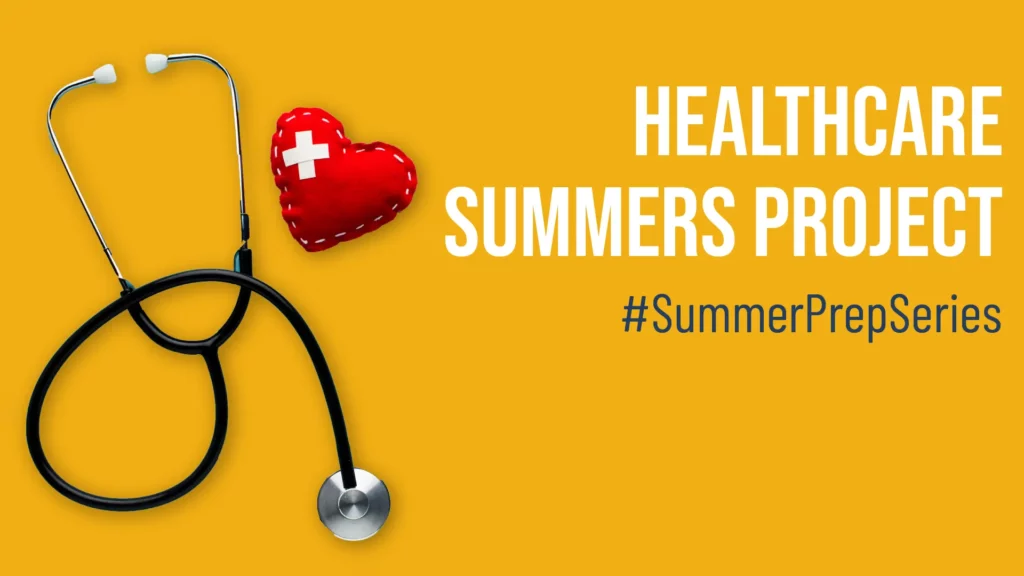How to Crack a PPO in Healthcare? #SummerPrepSeries

With this summer prep series, we want to help you crack a PPO in your summers. And if your summers is in Healthcare (Medical Devices), you’re at the right place.
The sector of medical devices can be best explained as the combination of Pharma & FMCG. Where you be selling the medical devices to doctors, clinics & hospitals. Not only this, you’ll also have the opportunity to work with various healthcare boards, authorities, insurance companies which will also give you a good flavour of B2B from time to time. A career in healthcare (medical devices) will help you gain dual experience both pharma & FMCG.
To help you with this, we are going to decode a project to give you an idea about how to approach your summers project in Healthcare (Medical Devices). Without further ado, let’s deep dive into the Healthcare (Medical Devices) project.
Summer Internship Project: Improving market access of medical devices in the cardiology space
Project Brief
Aoston Scientific develops and distributes high end precision medical devices to be used by doctors and surgeons for performing medical procedures on patients with cardiac ailments. Key stakeholders, other than medical practitioners and patients, in the procedure are insurance companies: since more often than not it is, they who provide coverage to patients undergoing these surgeries and bear costs for the same. Insurance plans that customers buy from all major insurance companies often specifically include or exclude certain procedures that can be covered in the insurance coverage of the patient. For the insurance company to cover the costs of the medial procedure the device used in the procedure needs to be ‘institutionalized’ by the insurance company. To achieve the institutionalized status a device needs to be deemed fit as a feasible solution in term of 2 parameters: health of patients and financial costs of insurance companies.
As a key provider of medical devices used in these procedures the onus is on Aoston Scientific to create products that meet the standards of all stakeholders. In order to achieve this a health economic evaluation of all devices is necessary. These devices must benefit patients who are treated from their use while being economically viable and scalable for use. The goal is to get devices institutionalized by IRDA (Insurance Regulatory and Development Authority) to improve market access as more patients will be willing to undergo treatment if costs are covered in insurance and medical institutions will also encourage treatment.
Objective and Deliverables
Perform a comprehensive health economic evaluation of 3 BS devices
- Suggest payer coverage improvement to insurance companies
- Compare and contrast inferior medical procedures with device based procedures on health and economic parameters through primary market research
- Pitch 3 devices for institutionalization certificate to IRDA
- Create a marketing plan to pitch devices to hospitals post institutionalization
Approach
- The first phase of the project included understanding the medical devices industry from a macro perspective including who the different stakeholders were and how they interacted with one another. This was done through an orientation organized for the interns where the internal teams at Aoston Scientific explained the organization and its functions in detail.
- After the projects were allocated, micro level research had to be done to understand the 3 cardio devices and their performance in order to proceed with a health economic evaluation. This was done through interactions with an internal team of doctors.
- Conversations with key opinion leaders in the medical space helped to understand the differences in medical procedures performed with and without the use of Aoston Scientific’s devices. Alternatives to device based procures were also understood and benchmarked in terms of benefits in patient recovery.
- A list of parameters was created and given weights to quantify the health aspect of the health-economic analysis. Data for these parameters was obtained through primary and secondary research from doctor and patient interviews along with medical journals respectively.
- In depth interviews with doctors and Key Opinion Leaders included questions about the working of the devices, alternate treatment procedures available, selection criteria of patients in terms of which procedures they choose from available alternatives, cases in which the device could or could not be used and how device usage could aid patient recovery.
- Patients who had undergone cardio procedures were interviewed and asked about their recovery, factors that make them opt for a particular procedure, post procedure effects and long as well as short run effects. To quantify the economic aspect of the procedures the initial cost was taken into consideration as well as subsequent costs post procedure eg) re-hospitalization costs if any, post procedure care costs, costs of medicines
- An excel model was created to compare short run and long run costs of procedures carried out with devices and alternate procedures available. It was found that while the economic costs of device based procedures were higher in the short run, in the long run alternate treatments would cost more primarily due to re-hospitalization required due to their inferior quality.
- On the basis of this research the model was initially verified by internal teams before being sent to IRDA for approval.
- A pitch deck for device institutionalization was also created emphasizing the higher re-admission costs that insurance companies would have to entail when inferior quality alternate procedures would be performed on patients since it would be the insurance companies that would have to pay for these re-admission costs as well.
- Post submission to IRDA a marketing plan had to be created to pitch the Aoston Scientific devices to hospitals. A doctor referral and review system was suggested where KoLs and experts in the cardiology space were asked to review the BS devices in medical journals.
- Compliance and legal teams were worked with in close collaboration to marketing team in order to carry out these marketing activities legally and ethically.
Stakeholders
External: Medical practitioners in hospitals: doctors and nurses, insurance companies, IRDA, patients who have undergone cardiac treatments
Internal: Internal medical team including Key Opinion Leaders, finance team, legal team, marketing team
End Result
- Health economic analysis of 3 cardio medical procedures: performed either with Aoston Scientific devices or through alternate procedures was done.
- Pitch decks were created for submission to IRDA and insurance companies to aid institutionalization.
Challenges
- The medical devices space is extremely technical and being a business student, it took a lot of effort in gaining familiarity with terms that Key Opinion Leaders and doctors used in their communication. Before taking interviews and making sense of them a lot of secondary research and self-teaching had to be done.
- Marketing of medical devices on the basis of mathematically done analysis to other business entities: insurance companies and compliance aggregating organizations: IRDA was very unlike the usual B2C low involvement category marketing we are often exposed to at B-school.
- Getting appointments with KoLs and doctors was also challenging as they are busy people who have little time to answer an intern’s questions.
- Gathering data from patients and asking them sensitive questions about health and finances was a challenge. Since each case was different turning quantitative feedback to qualitative numbers was also a challenge that was overcome with the support various of internal teams.
End Review Questions
Project specific
- Discussion on various figures in the excel model including several interjections inquiring about how the particular figure was arrived at
- How did you go about gathering data for the analysis?
- What were the quantitative and qualitative parameters you set to measure economic value and health?
HR + General questions
- What was the biggest challenge in the project?
- Does the healthcare sector interest you?
- What was your key learning from the project?
Now this is just one type of project you might get. Although, projects across sectors tend to have a lot in common. So make sure, you keep an eye out for other sector projects as well.
This article was written by Sneha Roy from FMS.
Check out our courses




